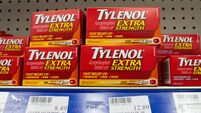Why does tea taste better in a china cup and how do you make the perfect brew?

Does the type of vessel change the taste of your tea?
We all have our preferred way of making tea, from the brand we choose to what we add to it. For many, the tea experience goes even further, with the cup being crucial to the final taste and then, at the pinnacle of tea drinking rituals, are those that will only drink it from a china cup. Is that just a placebo effect or does a china cup really change the overall taste of our tea?

Celebrating 25 years of health and wellbeing








